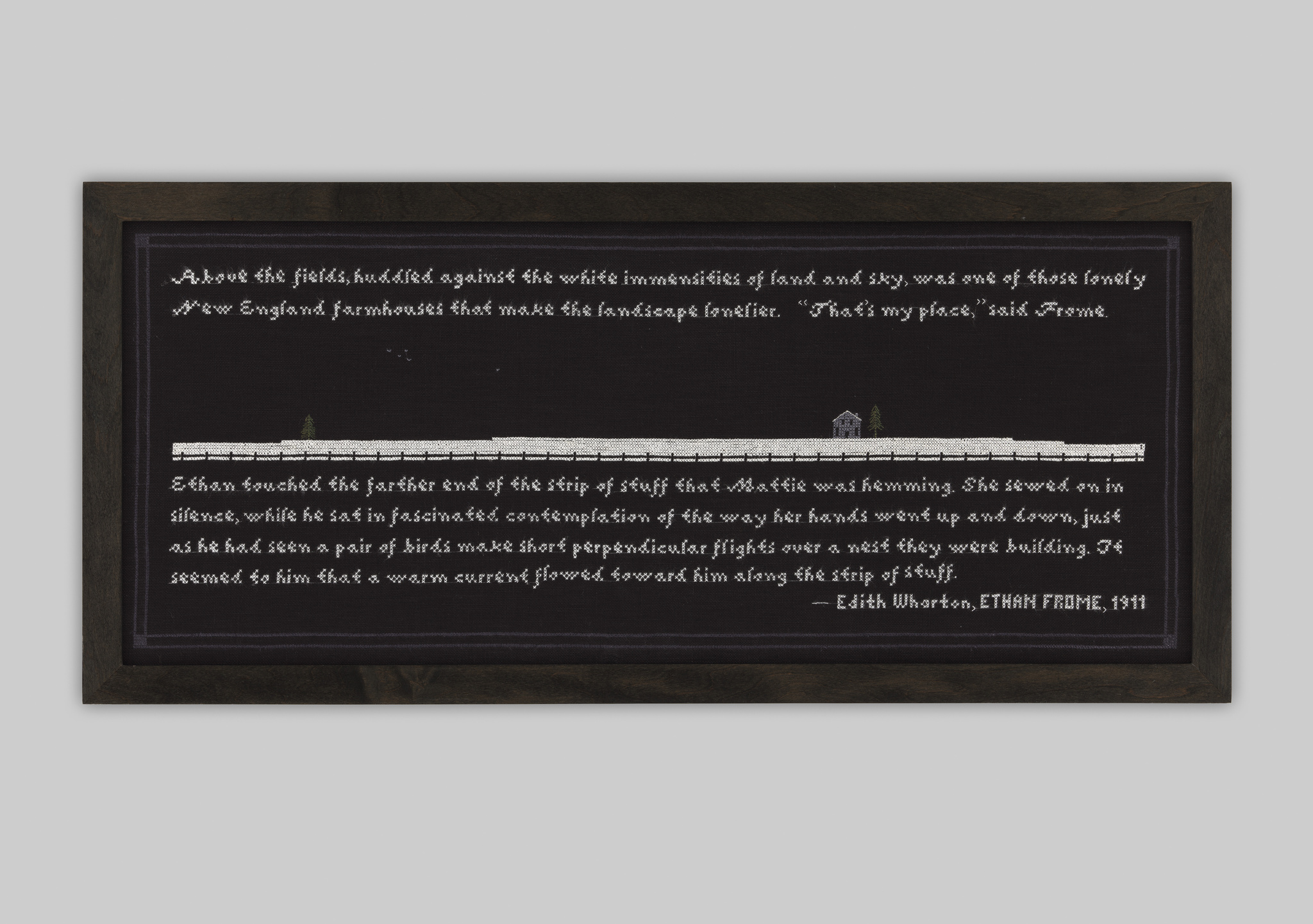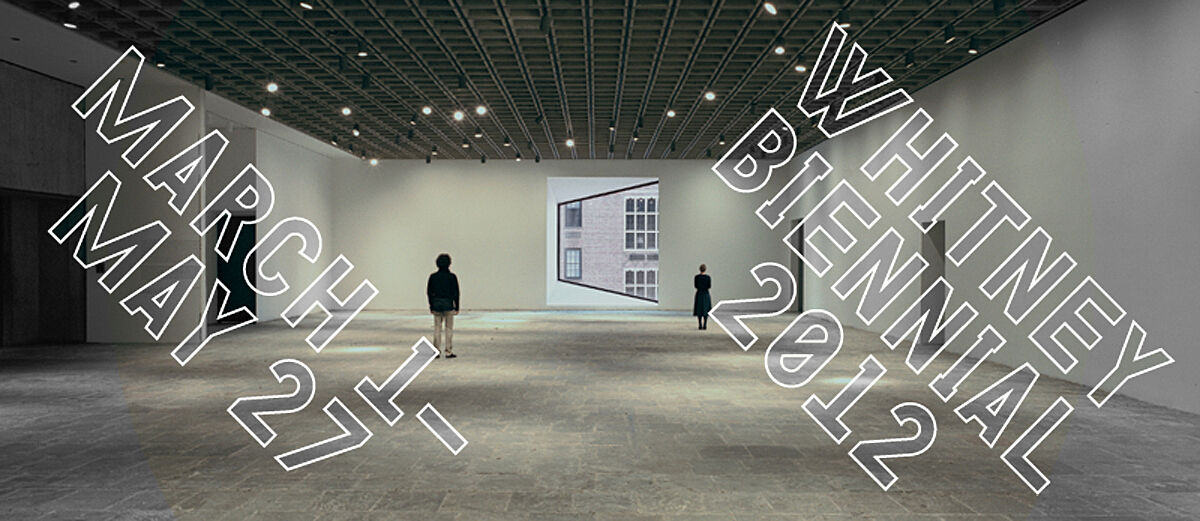Elaine Reichek
Feb 24, 2012
0:00
Elaine Reichek
0:00
Elaine Reichek: It's all tremendously organic, the way in which I work between technology, the hand, the eye, those are all included in the general practice.
Narrator: Artist Elaine Reichek.
Elaine Reichek: I use machines really for everything, except there is one drawing in the Biennial which is just a kind of–when I say drawing, I mean drawing with thread–in which I just look at the image and sit in front of it and make a drawing. For other works, I will scan an image, Google-shop an image, or take it from a book, or find an online source for it, and then work it through Photoshop and put it through a program which converts each stitch, each pixel to a square. And it gives you a chart, which is color-coded. It's a long translation process. And then from the coded chart I will hand-embroider something.
Narrator: These works come from a series called Ariadne’s Thread. The title is drawn from the story of a Greek mythic heroine who experiences love, despair, and ecstasy—in no small part due to the actions she performs with Reichek’s main material, thread.
Elaine Reichek: It's a discredited material that drags a great deal of baggage with it. I use it naturally, it's just my medium. And you're not hindered by your medium. You're simply saying "I use an old medium which has a long history, longer than painting. You know, Eve sews a little fig leaf for them [laughs] when they leave the garden. So it has a long history. And it has politics embedded in it. The politics of cloth, the politics of thread, Gandhi spins a revolution. Cloth has been used as money. It was taken on the Crusades. It has all these really—indigenous embroidery, national embroidery—it has all these really interesting kind of real-world connections.
I'm interested in the hand and the anxiety between handmade work and—there's a kind of anxiety about technology. Every new surge of technology has been associated with a great deal of anxiety. Certainly today we all fantasize we're going to end up with big heads and no hands, or big heads and hands and no body.


